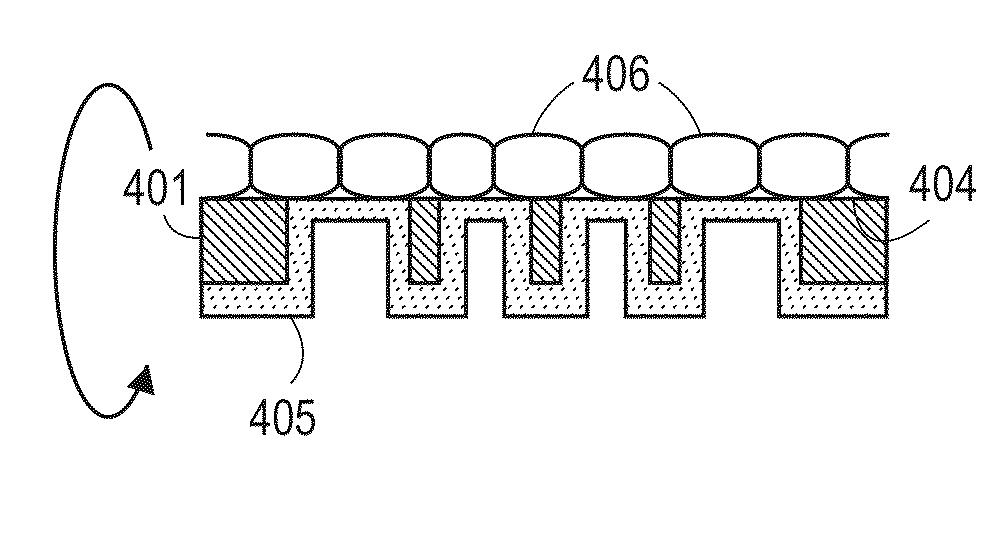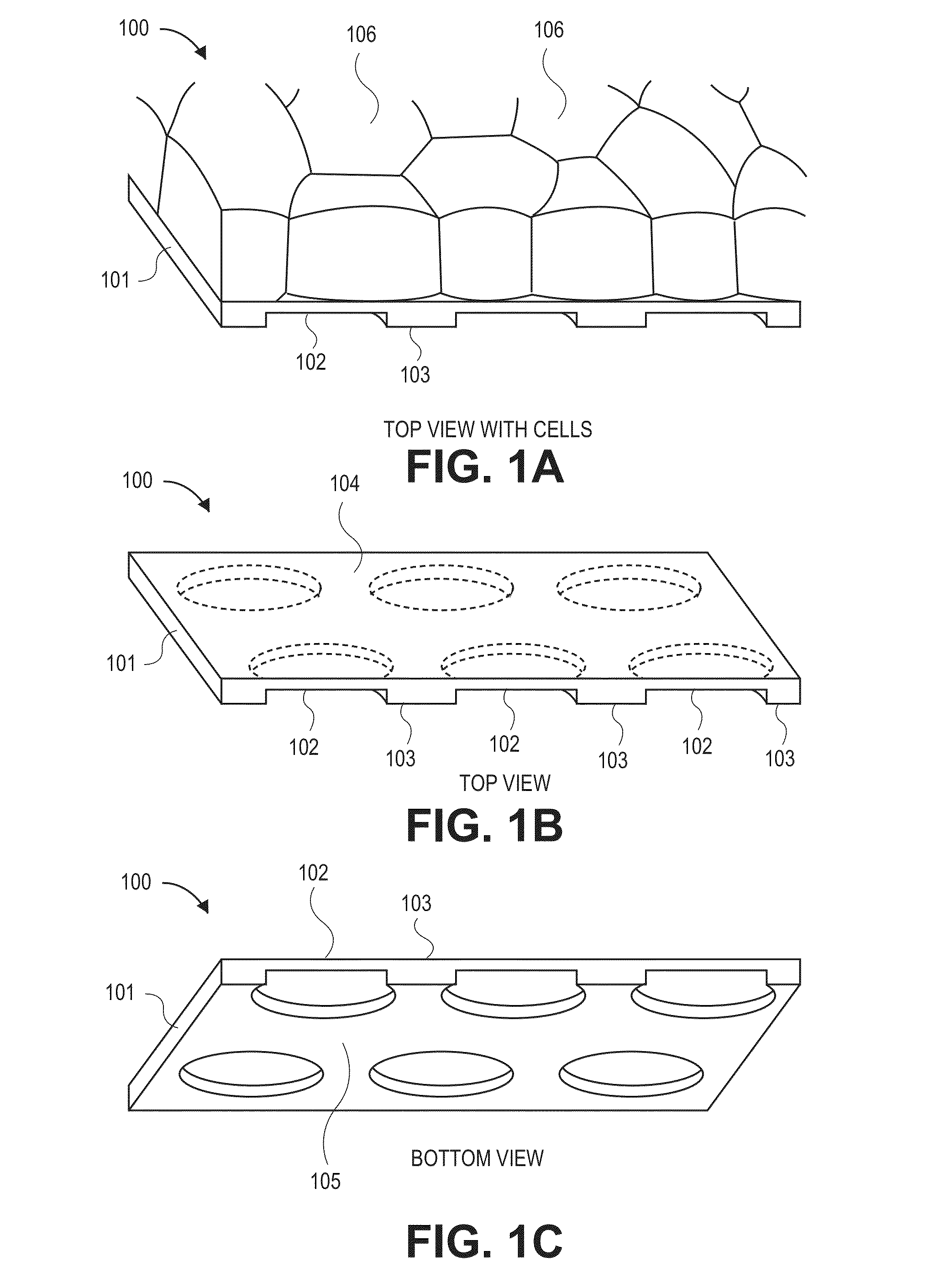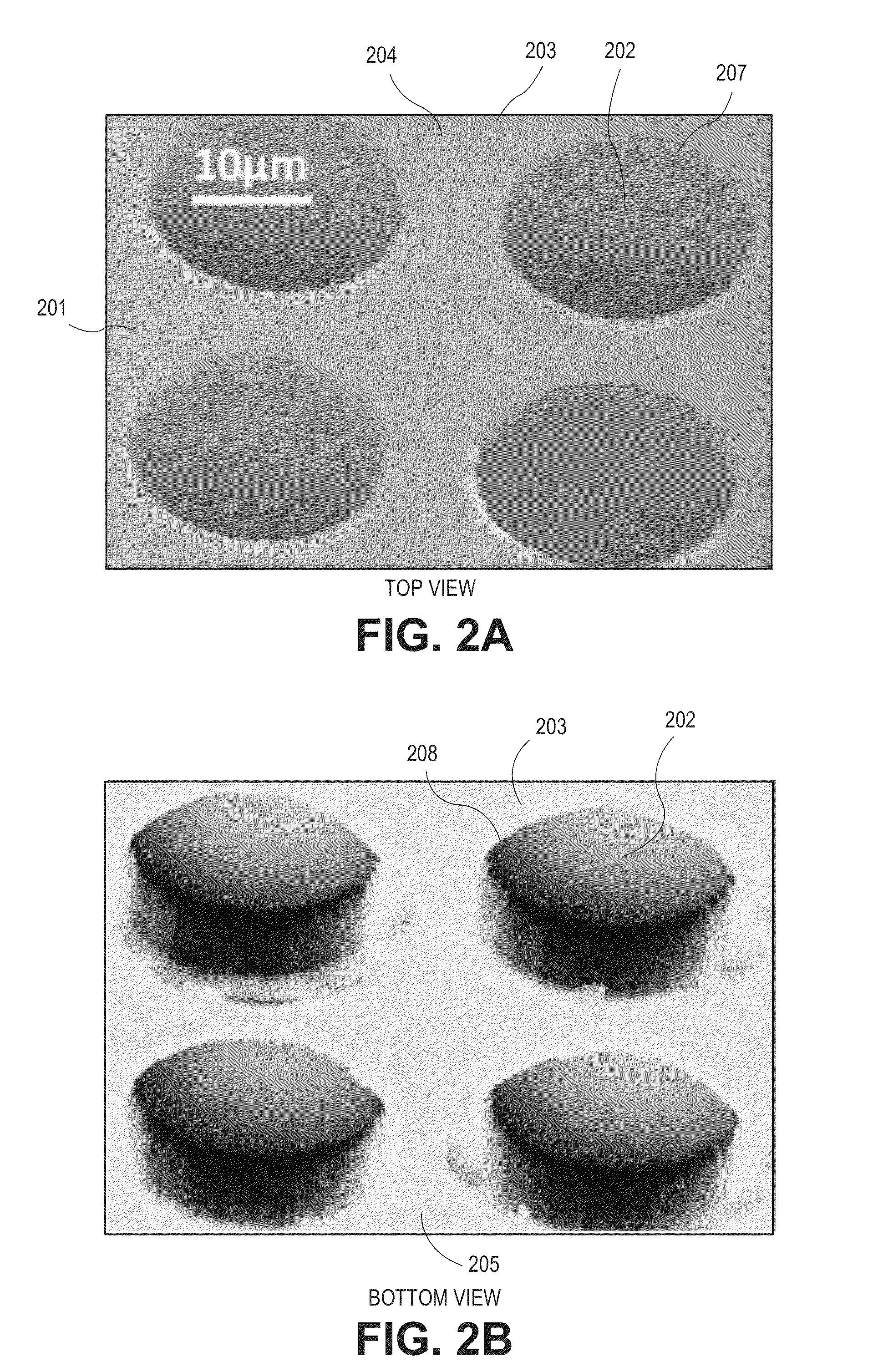Ultrathin parylene-c semipermeable membranes for biomedical applications
- Summary
- Abstract
- Description
- Claims
- Application Information
AI Technical Summary
Benefits of technology
Problems solved by technology
Method used
Image
Examples
Embodiment Construction
[0039]Generally, devices, systems, and methods for manufacturing a semipermeable parylene C membrane are disclosed. A membrane with ultrathin (e.g., 0.01 μm to 5 μm thick) parylene regions is arranged to have a smooth side and a spatially variable thickness. The smooth side can be used to grow a monolayer of cells, while the bumps or undulations on the second side prevent cell growth on the second side. The ultrathin portions of the parylene are permeable to protein-sized molecules but impermeable to cells, which are on the order of 4 μm (for tiny photoreceptor rod and cone cells of the retina) to greater than 20 μm. The thicker portions of the membrane, which are interspersed with the thin portions, make the membrane stronger, less prone to folding or undulating, and generally easier to handle for surgeons.
[0040]Prior art porous membranes have been found to have disadvantages. First, the fabrication of small holes (i.e., <0.1 μm) is difficult to perform reliably. Therefore, in some...
PUM
| Property | Measurement | Unit |
|---|---|---|
| thickness | aaaaa | aaaaa |
| thickness | aaaaa | aaaaa |
| thick | aaaaa | aaaaa |
Abstract
Description
Claims
Application Information
 Login to View More
Login to View More - R&D
- Intellectual Property
- Life Sciences
- Materials
- Tech Scout
- Unparalleled Data Quality
- Higher Quality Content
- 60% Fewer Hallucinations
Browse by: Latest US Patents, China's latest patents, Technical Efficacy Thesaurus, Application Domain, Technology Topic, Popular Technical Reports.
© 2025 PatSnap. All rights reserved.Legal|Privacy policy|Modern Slavery Act Transparency Statement|Sitemap|About US| Contact US: help@patsnap.com



